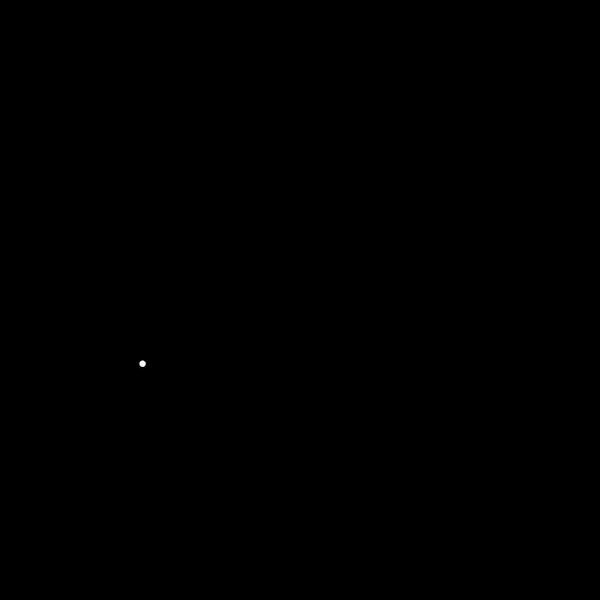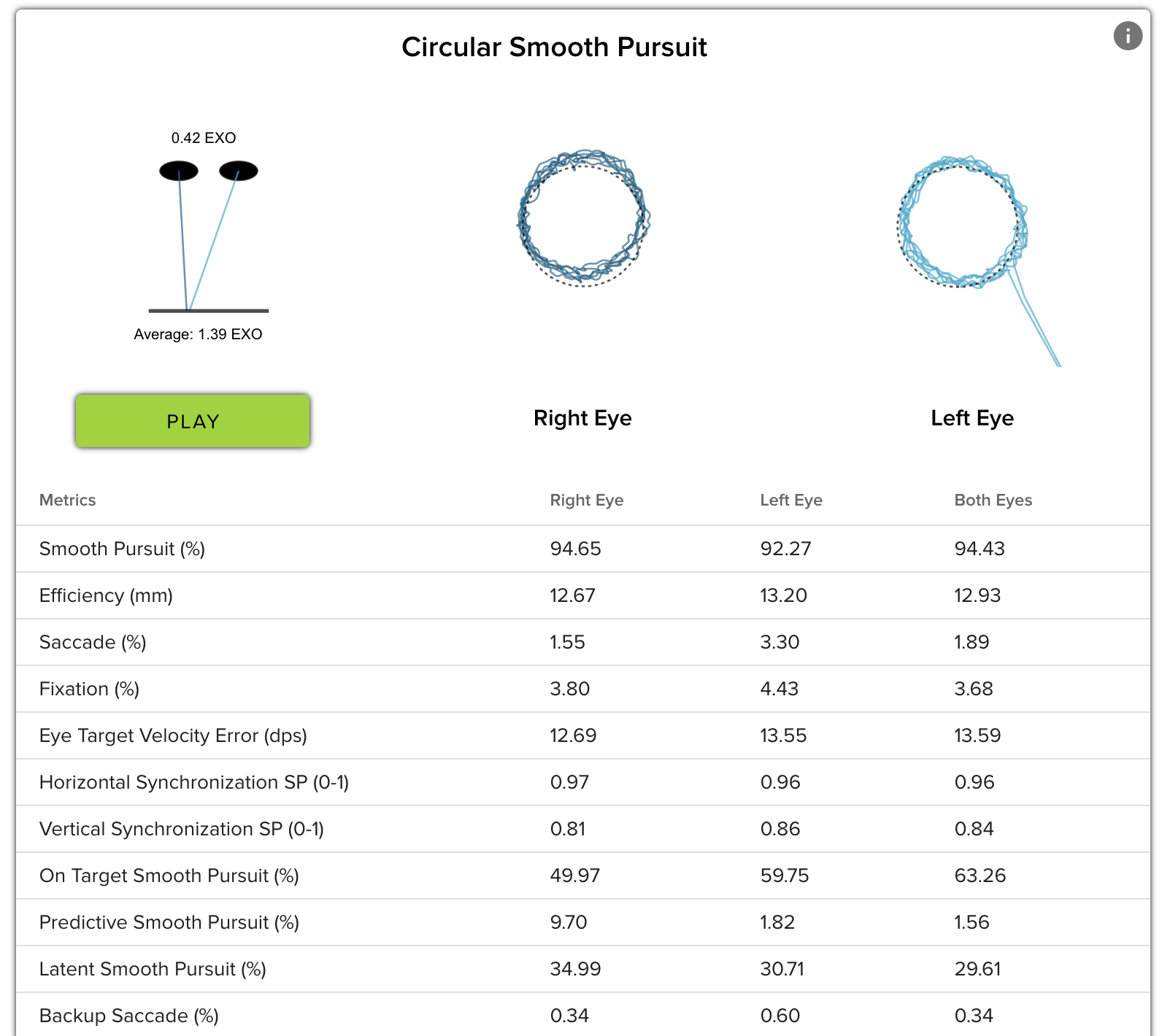| Circular Smooth Pursuit (CSP): are voluntary eye behaviors that become active when a moving target appears in the visual field. Various areas of the brain and visual systems control CSP eye movements. Abnormal CSP behavior highly correlates with traumatic brain injury (TBI), attentional deficits, and even neurological pathologies such as epilepsy and Parkinson’s disease (Bloom, 2013; Contreras et al., 2008; Contreras et al., 2011; Maruta et al., 2010). |  |
Circular Smooth Pursuit is included in Dynamic Vision and Sports Vision EyeQ modules, as well as Custom Protocols and as an Individual Test.
In this article:
Test Description
This RightEye test is a digitalized model of the “follow the tip of my pencil” test that neurologists give as part of a clinical or field exam to a suspected (or known) TBI individual. Clinical protocols such as the Vestibular Ocular Motor Screening (VOMS) are similar though subjective and less sensitive than this RightEye test. The goal of this RightEye test is to determine if the individual has a normal response (able to execute a smooth pursuit: eyes can smoothly follow a target) or an abnormal response (unable to execute a smooth pursuit: eyes jump, jerk, or move off target).
Administration Script
When administering CSP, use the following verbal instructions:
- You will see a white dot on a black screen.
- The dot will move in a circle.
- Follow the dot with your eyes only. Do not move your head.
Metrics
Test metrics for Circular Smooth Pursuit can be found on the FDA Standard report type.

- Smooth Pursuit (%): eye movements that follow the target within a velocity range of the target, and are reported as a percentage of the test time. SP% refers to % of time spent in SP with acceptable distance and speed. 100% is perfect. Smooth Pursuit+Saccade+Fixation sum to 100%.
- On Target Smooth Pursuit (%): refers to the user’s eyes within a velocity range of the target, positioned on the stimuli within 2 cm, and reported as a percentage. On Target SP refers to % of time within 9 mm of the target while in SP. This varies by person and higher % can indicate a dominant eye. On Target Smooth Pursuit + Predictive Smooth Pursuit + Latent Smooth Pursuit sum to 100%.
- Predictive Smooth Pursuit (%): refers to the user’s eyes within a velocity range of the target and positioned ahead or in-front-of the stimuli between 2 and 5 cm and reported as a percentage. On Target Smooth Pursuit + Predictive Smooth Pursuit + Latent Smooth Pursuit sum to 100%.
- Latent Smooth Pursuit (%): refers to the user’s eyes within a velocity range of the target and positioned behind the stimuli between 2 and 5 cm and reported as a percentage. On Target Smooth Pursuit + Predictive Smooth Pursuit + Latent Smooth Pursuit sum to 100%.
- Saccade(s) (%): are fast eye movements that move the eyes from one point of interest to the next. They are calculated outside (above or below) the velocity range of the target and reported as a percentage of test time. Smooth Pursuit + Saccade + Fixation sum to 100%.
- Fixation (%): Fixation is a stopping point of the eye that allows the user to see in detail, and are reported as a percentage of the test time. Fixation and Saccade % should be low.
- Efficiency (millimeters): refers to the error in the users’ gaze is from the ideal pathway. Lower is better.
- Eye/Target Velocity Error (°/s): refers to how far the user’s eyes were away from the target (non-directional). This metric is calculated by subtracting the location of the stimuli and the user’s eyes at same sample time, and reported as degrees per second. Eye/Target Velocity Error refers to speed represented in degrees/second off target. A low number is better.
- Horizontal synchronization SPEM (0-1): refers to how far off on the X plane (co-ordinate) the user’s eyes were during the test. Perfect synchronization is a score of 1.0.
- Vertical Synchronization SPEM (0-1): refers to how far off on the Y plane (co-ordinate) the user’s eyes were during the test. Perfect synchronization is a score of 1.0.